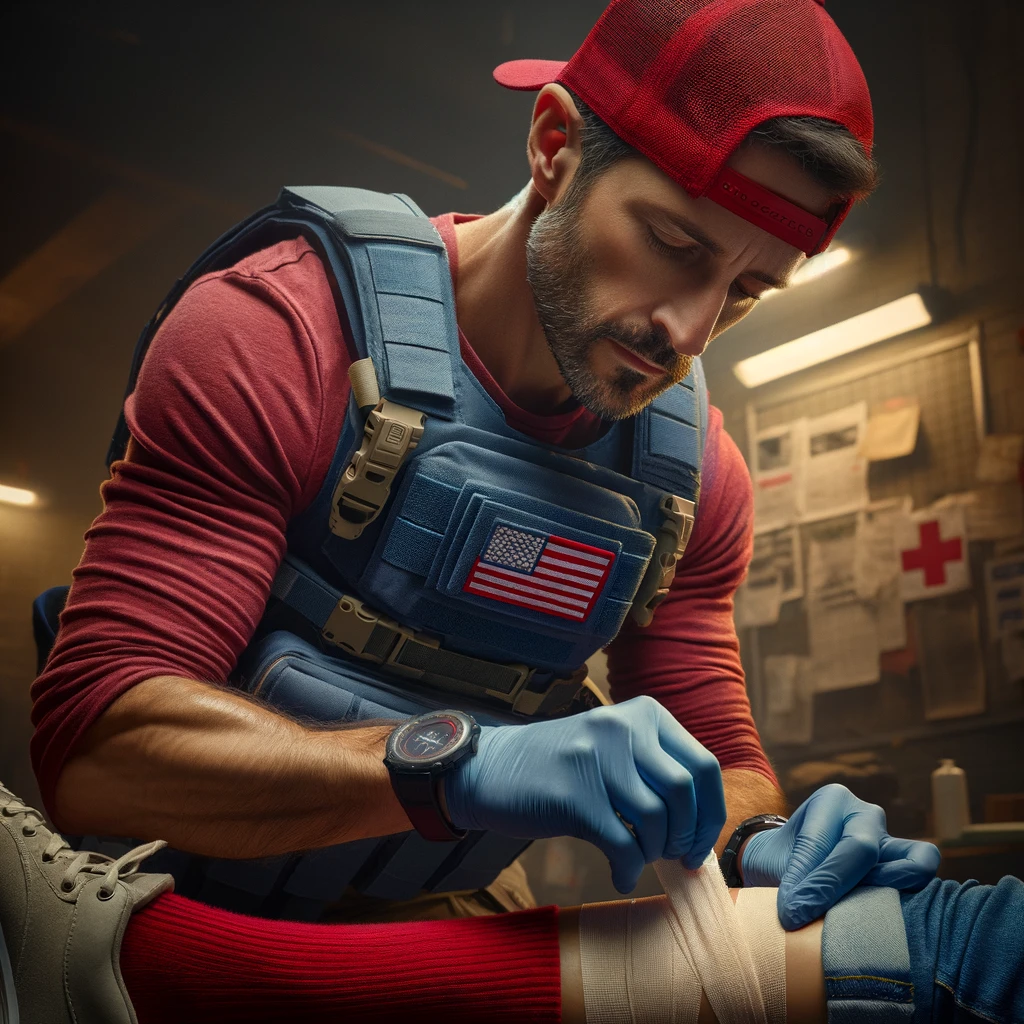
Step 1: Ensure Safety
- Prioritize safety for both you and the injured person. Use gloves if available to reduce the risk of infection.
Step 2: Apply Direct Pressure
- Direct pressure is the most effective way to stop bleeding. Place a clean cloth or bandage directly on the wound and apply steady, firm pressure. If the cloth becomes soaked with blood, place another cloth on top, but do not remove the first cloth.
Step 3: Elevate the Wound
- If it’s safe and does not cause the injured person pain, elevate the bleeding area above the level of the heart. This helps reduce blood flow to the area, aiding in controlling the bleeding.
Step 4: Secure the Bandage
- Once the bleeding has slowed or stopped, secure the cloth or bandage with adhesive tape or continue to hold it in place with your hands. If you have medical bandages, wrap the wound snugly but not so tight as to cut off circulation. If the injury is on a limb, check for circulation beyond the bandage by pressing on a fingernail or toenail and looking for color return.
Step 5: Do Not Remove the Bandage
- Do not remove the bandage once it’s applied, even if the bleeding soaks through. Instead, add more layers as needed. Removing the bandage might disturb any clots that are forming and restart the bleeding.
Step 6: Immobilize the Injured Part
- If possible, immobilize the injured body part to prevent further injury and reduce bleeding. Use a splint or sling if you know how to apply one correctly.
Step 7: Monitor for Shock
- Keep the person warm and comfortable. Monitor for signs of shock, which can include cold, clammy skin, weakness, rapid breathing, or loss of consciousness. Have the person lie down with their legs elevated if it’s safe and does not cause pain.
Step 8: Seek Medical Help
- Seek professional medical assistance as soon as possible, especially if the bleeding is severe or doesn’t stop with direct pressure. If you suspect the person has lost a significant amount of blood, or if the wound appears deep, they may need additional treatment.
Step 9: Aftercare
- Once the bleeding is controlled and bandaged, ensure the person gets the necessary aftercare. This may involve tetanus shots, stitches, or other medical interventions.
Step 10: Education and Preparedness
- Consider getting trained in first aid and CPR. Knowing what to do in these situations can save a life. Regularly restock your first aid kit and keep it within easy reach.
Handling a bleeding emergency effectively can prevent further injury and may save a life. Always prioritize getting professional medical help for the injured person.
